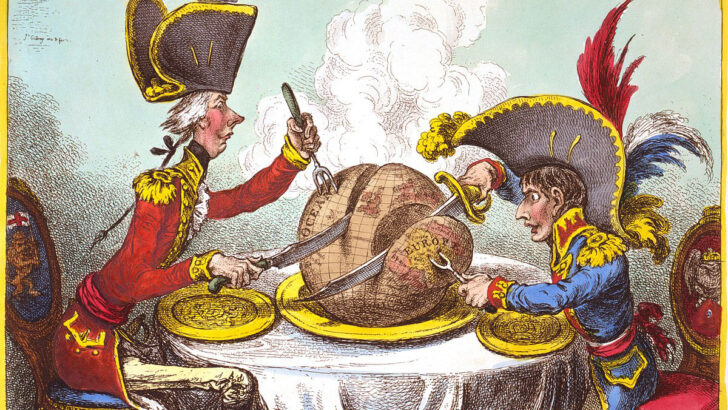Uproar! Satire, Scandal and Printmakers in Georgian London, by Alice Loxton (Icon Books, £25.00).
Felix M. Larkin
When Martyn Turner skewers today’s politicians in his cartoons for The Irish Times, he is following in a rich tradition of visual satire that stretches back into the late 18th Century.
The early years of such satire in Britain – the period from the 1780s to c.1820 – is the subject of this brilliant book. That period is described by the book’s author, Alice Loxton, as “the golden age of British satire” and her focus is on the three leading practitioners of the art of visual satire in the period: James Gillray (1756-1815), Thomas Rowlandson (1757-1827) and Isaac Cruikshank (1764-1811).
Unlike today’s cartoons, their work was published and sold as prints on single sheets of about A3 size – artefacts in their own right, as distinct from featuring in a newspaper or magazine. They were sold through specialist print shops, and Loxton tells us that “completed prints would be displayed in the multi-paned bow windows of print seller shops’.”
She notes that “print shops were fashionable meeting places” and “as important to London’s fabric as the bustle of a coffee house or the gentle curve of the Thames”. In 1790, the typical price of a cartoon was one shilling for a plain print and two shillings for a coloured one. The coloured cartoons were hand-painted after they rolled off the printing-press.
The cartoons were often drawn to order, to serve as propaganda for one side or another in a political controversy. This was a time of acute rivalry between Whigs and Tories in Britain, represented by Charles James Fox and William Pitt the Younger respectively. Their rivalry was, in Loxton’s words, “more than worthy of the satirist’s pen” – but it was a pen for hire.
Polar opposites
Loxton records that cartoonists “regularly switched between political sides, sometimes arguing for polar opposites within the same week”. A cartoon would even be commissioned on occasion in reply to an earlier one, thus setting up a contest in humour among warring factions. Working to order, however, did not compromise what Loxton calls “the insuppressibly creative spirit” of Gillray, Rowlandson and Cruikshank.
One might have expected these cartoonists to be sympathetic to the radical ideas of the French revolution, but as Paris descended into an orgy of bloodshed in the 1790s and then succumbed to the autocracy of Napoleon, they rallied to support the status quo in Britain and, for example, celebrated in their cartoons the victories of Nelson over the French in the Battle of the Nile and at Trafalgar.
This was, of course, what the government wanted – and probably paid them for. Napoleon was a particular target of the cartoonists, and Gillray is credited with creating the myth of Napoleon as a small man – by caricaturing him repeatedly as “Little Boney”. In reality, Napoleon was of average height for his time – about five feet six inches. According to Loxton, Napoleon later claimed that Gillray’s prints did him more damage than a dozen British generals.
Ambitions
The rival ambitions of Napoleon and his British enemies for world domination inspired what Loxton calls Gillray’s “most enduring work” in 1805. This is a cartoon entitled “The Plumb-pudding in danger”, and it depicts the British prime minister, Pitt, with Little Boney at dinner.
They are tucking into an enormous steaming plumb-pudding in the shape of the globe and are dividing it between themselves – France, Spain and most of the rest of Europe for Napoleon; the Americas and the West Indies for Britain. The caption is adapted from Shakespeare: “the great Globe itself and all which it inherits is too small to satisfy such insatiable appetites”. It is a cartoon very much in the modern mode, lampooning everyone – not peddling a particular line.
Single-sheet cartoons became obsolete when technological advances in printing facilitated the production of illustrated newspapers and magazines for a mass market. Magazines such as Punch, founded in 1841, would thus monopolise visual satire in Britain for the rest of the 19th Century.
Enthusiasm
This book is recommended reading for everyone who appreciates satirical humour – and who does not appreciate it? It is written in a lively style that complements the author’s evident enthusiasm for the subject matter. Many of the particular cartoons that she references are reproduced in the volume, but in most instances they are unfortunately so small that it is difficult to make out the rich detail in them or to read the captions. This is my only criticism of what is a very fine book by a promising young scholar.



